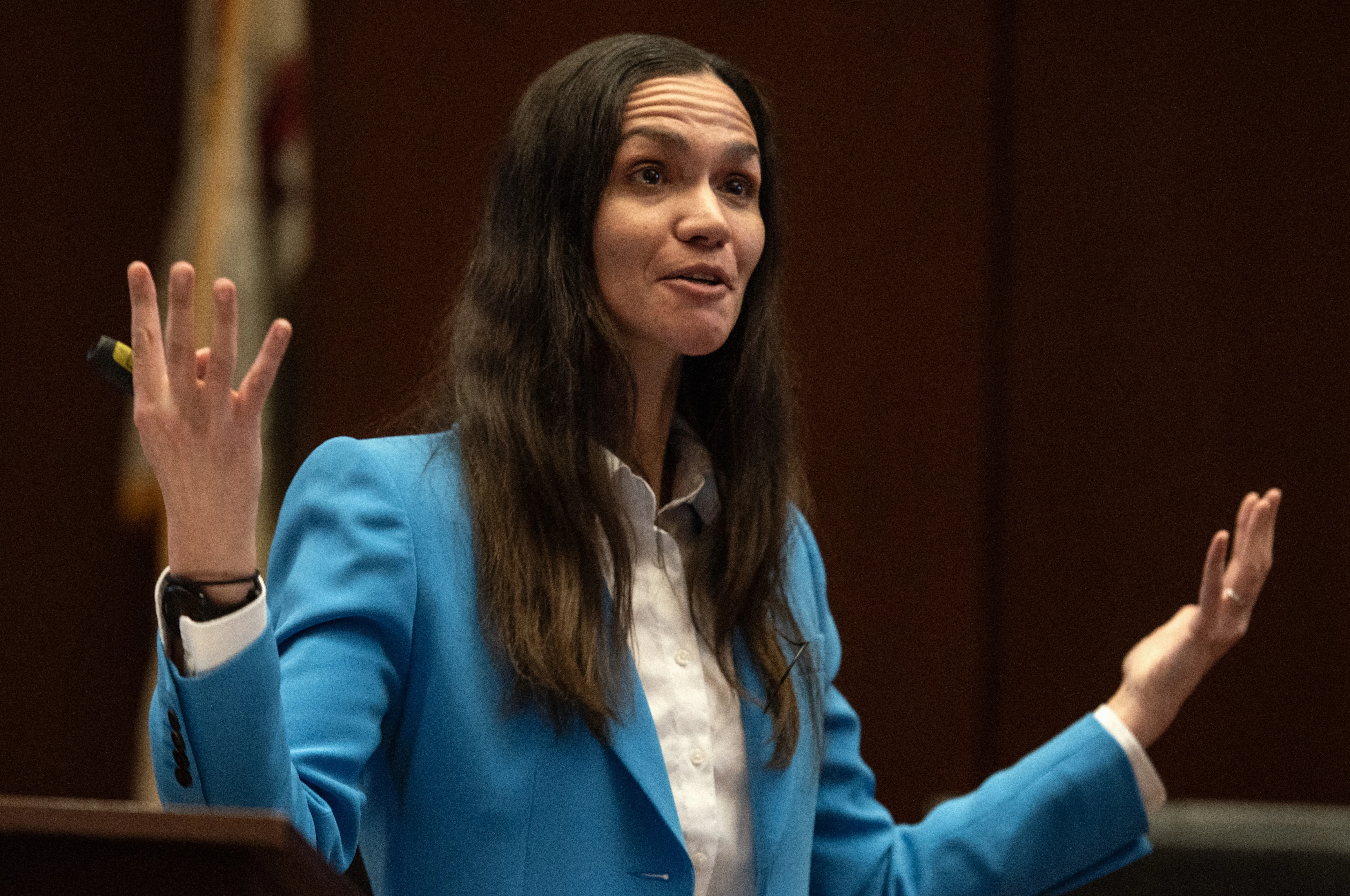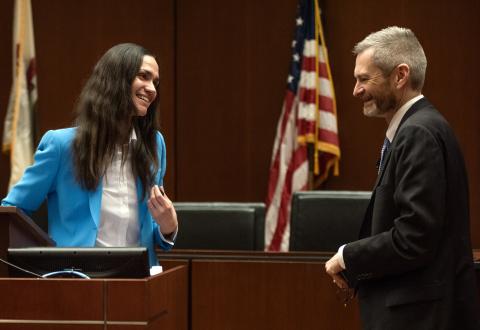Adriana Robertson at 2024 Coase Lecture: Efficient Capital Markets Serve the Public Good

Many people think about the Wild West portrayed in “The Wolf of Wall Street” when they think about the financial markets, but the markets are, in fact, very well regulated and do a lot of good, says Professor Adriana Robertson.
In her 2024 Coase Lecture, “Finance for the Public Good,” Robertson dispelled some common misconceptions about the financial markets and made the case that they are incredibly efficient vehicles for doing what they were designed to do, facilitating the effective distribution of capital.
“Are financial markets perfect? Of course not,” said Robertson, the Donald N. Pritzker Professor of Business Law. “Are there sometimes externalities or misallocation? Undoubtedly. Are there sometimes abuses? Unfortunately, yes. … But despite all that, capital markets on the whole are pretty darn amazing.”
Over the lively hour-long lecture, Robertson used humor and simple concrete examples to explain how the capital markets function and the many ways in which they serve the greater good.
This Coase Lecture Series, dedicated to the honor of path-breaking Law and Economics Professor Ronald Coase, began in 1992. The lectures are presented by program faculty and are intended to provide law students and others with an introduction to important techniques and results in law and economics. Dean Thomas J. Miles delivered the welcoming remarks at the Jan. 30 program.
Understanding Capital Markets
At the outset, Robertson explained a few key concepts of capital markets.
To demonstrate the concepts of transfer of value and the allocation of risk, Robertson gave the example of a seller providing a buyer with apple seeds in exchange for a percentage of the resulting apples. Both sides get something from the transaction. The seller gives up something immediately (the seeds), while the buyer takes on the time, expense, and risk of growing the seeds into trees and harvesting the apples.
Robertson next introduced the concept of hedging risk. The apple tree grower could contract with a third party, trading a percentage of a future apple crop for a percentage of a different crop that thrives when apples don’t. Both sides would be reducing their downside risk if conditions prove unfavorable to their particular crop, she said.
After explaining these basic functions of finance, Robertson discussed three of the major sources of financial market regulation—securities, corporate, and bankruptcy law. Broadly speaking, securities laws help regulate the flow of information; corporate laws help regulate the internal workings of corporations; and bankruptcy laws mediate disputes between claimants when things go wrong and there is not enough money to go around, she explained.
Market Types and Functions
Robertson next explored the roles of the primary market, the secondary market, and financial intermediaries, and addressed common misunderstandings about the benefits each provides to the financial system.
The primary market is where businesses, entrepreneurs, and other innovators directly get the money they need to fund their ideas. The funds could come from a variety of sources, including individuals, institutional investors, or IPOs.
While acknowledging the IPO process and other means of funding can be abused, Robertson said that such cases are rare and matching up innovators with the money to fund their ideas is a good thing that is generally done well by the capital market.
“If we don't let people who have ideas raise capital from external investors, then what's going to happen?” Robertson asked. “Only rich people could start companies and only people who already have the capital could bring their ideas into the world.”
Turning to secondary markets, Robertson said that providing investors the opportunity to sell their stake for a fair price and move their capital to fund other ideas and innovations is a positive attribute of the financial system that encourages investment. She also pointed out that while some people may think of the secondary market as a “rigged casino,” there are a lot of laws and regulators that oversee transactions conducted on the secondary market.
Turning to financial intermediaries, including investment funds and advisors, Robertson said they help level the playing field. The financial intermediary, whose job it is to know the market, is presumably much better informed about where the capital can be effectively deployed than a small investor with limited interaction with the market can be, she said.
“Does that mean that we should let the foxes run the hen house?” Robertson asked. “Obviously not. We don't. … When it comes to investment companies like say mutual funds, we have an enormously elaborate regulatory [structure]. And that doesn't mean it's perfect, but it does work remarkably well.”
Robertson next considered arguments commonly made against the capital markets, highlighting two in particular—the rich get richer and “some really obnoxious people get rich.”
“You can think of your favorite obnoxious jerk that made money in the capital markets, … [and] obviously no one likes it when good things happen to bad people,” she said. “[But], on the other hand, I regret to inform you that being obnoxious is not a crime, at least not at this time."
Perhaps more importantly, Robertson pointed out that it isn’t just the rich who participate in the capital markets. Many Americans participate through 401Ks, IRAs, pension funds, and other retirement-savings vehicles. And, while it is true some rich do indeed get richer on the capital markets, a lot of middle-class families benefit as well, she said.
Common Good vs. Social Mission
Robertson cautioned against efforts to engraft social missions, however desirable they may be, onto the financial markets.
“Does that mean that there aren't other problems in the world like climate change or discrimination or any number of other problems? Well of course it doesn't mean those aren't problems,” she said. “But it seems to me pretty obvious that there are other ways, much more direct ways, to address those problems and we shouldn't risk disrupting something that's doing a pretty great job at a really important job to do that. Don't try to make capital markets serve some kind of social goal. They're already serving the common good just the way they are.”
Summing up, Robertson observed, “Our capital markets are the envy of the world. They enable mind-boggling innovation, which has improved the standard of living for everyone. They enable broad participation in the wealth generated by that innovation. So we're winning on both sides. We get the product and we also get to participate in the wealth that they generate. We have this amazing thing going here. We shouldn't lose sight of that.”

